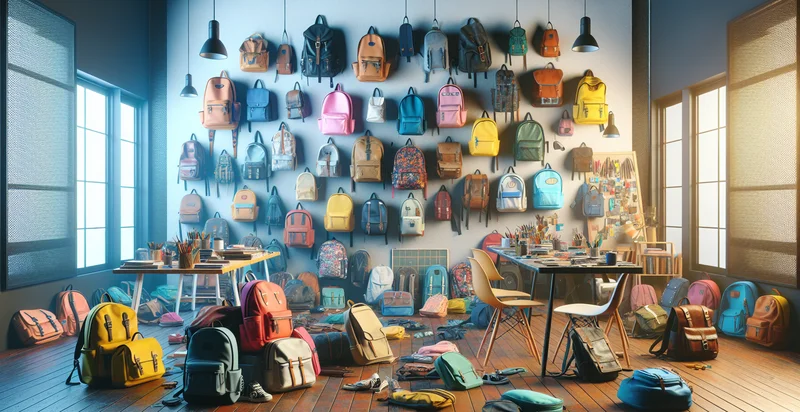Identify how many backbacks are in the room
using AI
Below is a free classifier to identify how many backbacks are in the room. Just upload your image, and our AI will predict how many backpacks are in the room - in just seconds.

Contact us for API access
Or, use Nyckel to build highly-accurate custom classifiers in just minutes. No PhD required.
Get started
import nyckel
credentials = nyckel.Credentials("YOUR_CLIENT_ID", "YOUR_CLIENT_SECRET")
nyckel.invoke("how-many-backbacks-are-in-the-room", "your_image_url", credentials)
fetch('https://www.nyckel.com/v1/functions/how-many-backbacks-are-in-the-room/invoke', {
method: 'POST',
headers: {
'Authorization': 'Bearer ' + 'YOUR_BEARER_TOKEN',
'Content-Type': 'application/json',
},
body: JSON.stringify(
{"data": "your_image_url"}
)
})
.then(response => response.json())
.then(data => console.log(data));
curl -X POST \
-H "Content-Type: application/json" \
-H "Authorization: Bearer YOUR_BEARER_TOKEN" \
-d '{"data": "your_image_url"}' \
https://www.nyckel.com/v1/functions/how-many-backbacks-are-in-the-room/invoke
How this classifier works
To start, upload your image. Our AI tool will then predict how many backpacks are in the room.
This pretrained image model uses a Nyckel-created dataset and has 12 labels, including 0 Backpacks, 1 Backpack, 2 Backpacks, 3 Backpacks, 4 Backpacks, 5 Backpacks, 6 Backpacks, 7 Backpacks, 8 Backpacks and 9 Backpacks.
We'll also show a confidence score (the higher the number, the more confident the AI model is around how many backpacks are in the room).
Whether you're just curious or building how many backbacks are in the room detection into your application, we hope our classifier proves helpful.
Related Classifiers
Need to identify how many backbacks are in the room at scale?
Get API or Zapier access to this classifier for free. It's perfect for:
- Inventory Management: This function can be utilized by retail stores to assess the number of backpacks in stock during inventory audits. By automating the counting process, businesses can save time and reduce human error, ensuring accurate reporting of inventory levels.
- Event Coordination: For event planners, this function can help determine how many backpacks attendees bring to events or conferences. This data can assist in planning for space management and resource allocation, particularly for workshops or sessions where materials are distributed.
- Educational Resource Allocation: Schools and universities can use this function to monitor the number of backpacks brought to classrooms or study areas. This information will enable officials to better understand student participation and adjust resources accordingly, such as increasing seating or materials.
- Security Monitoring: Security personnel in public spaces or venues can implement this function to gauge the number of backpacks in a given area as a part of their surveillance protocols. This can enhance security measures by identifying unusual patterns or overcrowding, allowing for quicker response times.
- Insurance Risk Assessment: Insurance companies could use this function for assessing risk profiles in commercial spaces, such as retailers or warehouses. A typical count of backpacks can inform coverage decisions, especially for businesses where liability may increase due to the volume of personal items.
- Market Research: Researchers can deploy this function to gather data on consumer behavior by analyzing how many backpacks are typically brought to specific locations. This data can reveal trends in usage and preferences, informing product development and marketing strategies.
- Environmental Impact Studies: Environmental organizations may use this function to track impacts related to backpack use in nature reserves or parks. Understanding how many backpacks are present can help assess visitor numbers, impacting conservation policies and resource management decisions.


